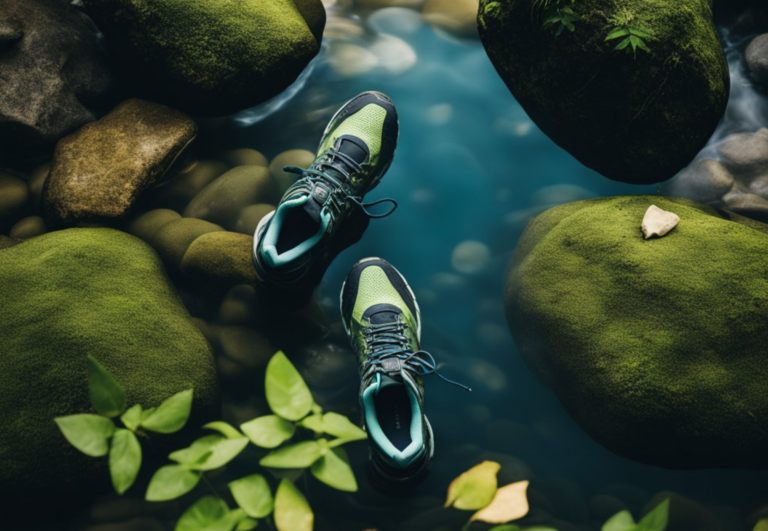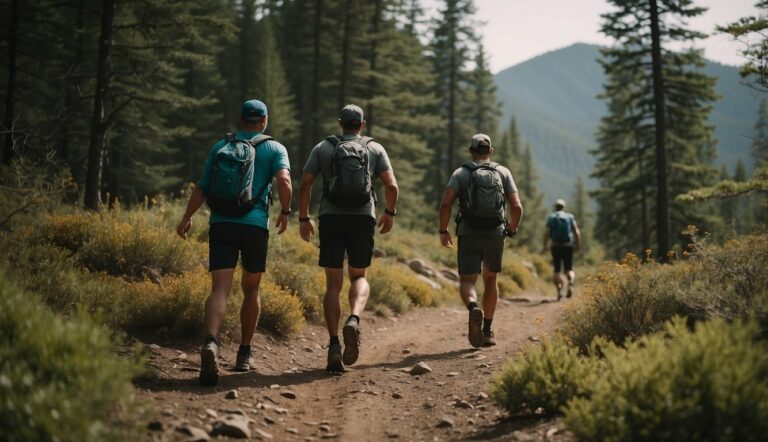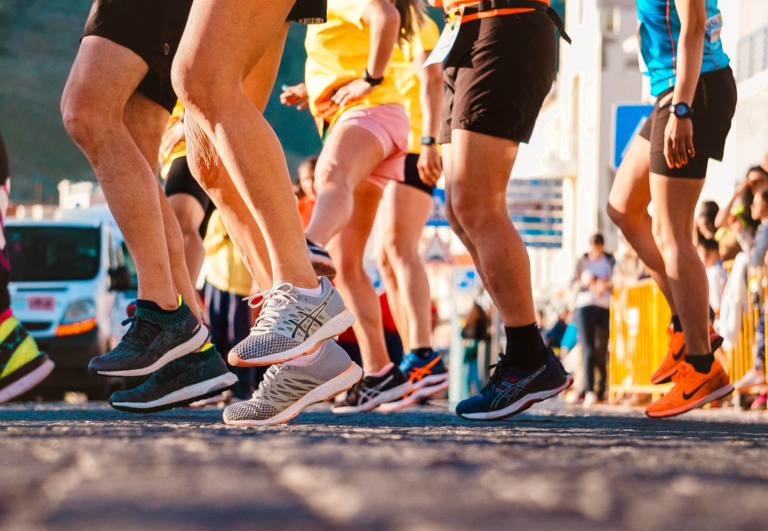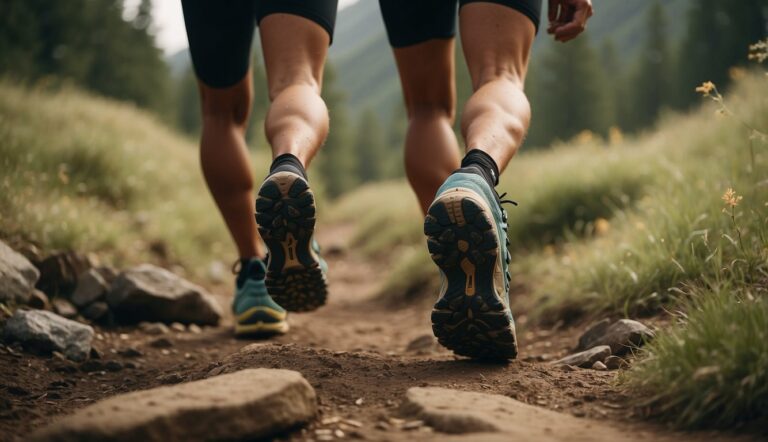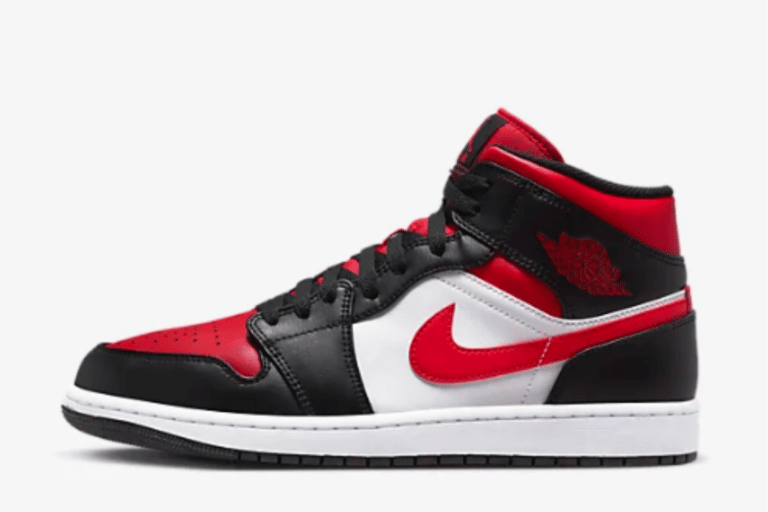How to Clean and Maintain Trail Running Shoes: Simple Tips for Durability
Trail running shoes are your trusty companions on rugged paths and treacherous terrain. Just like any reliable partner, they require care and attention to maintain their condition and performance.
Keeping your trail running shoes clean not only extends their life but also ensures better grip on the trails, providing you with stability and safety during your runs.
Cleaning your shoes after a muddy run might seem like a chore, but it’s a simple yet crucial step in your post-run routine. Dirt and debris can break down the materials of your shoes quicker than usual wear and tear. By regularly washing and maintaining your trail runners, you safeguard your investment and keep your feet happy on every run.
Overview of Cleaning Trail Shoes
As an experienced trail runner, you know the importance of keeping your trail running shoes in top shape. Dirt and grime can affect their performance and longevity.
Here’s a friendly guide to help you maintain your shoes after tackling those muddy trails.
Cleaning the Uppers: The uppers of your trail running shoes are likely made from fabric and mesh, which are great for breathability but can hold dirt. Start by:
- Removing Laces: Take them out before cleaning.
- Brush Off Dirt: Use a soft brush to gently remove debris.
- Wash: Clean using mild soap and warm water, taking care not to soak the fabric.
Outsole Care: Your shoes’ outsoles provide traction over rough terrain, so it’s vital to keep them free from caked-on mud.
- Rinse Off Mud: After your run, rinse the soles under running water to remove debris.
- Scrub: A stiff brush can help dislodge persistent dirt.
Drying Your Shoes: Proper drying is crucial to prevent odors and damage.
- Air Dry: Place in a well-ventilated area away from direct heat.
- Use Newspaper: To absorb moisture, stuff the shoes with newspaper.

General Maintenance Tips:
| Do | Don’t |
|---|---|
| Rinse after each use | Put shoes in the washing machine |
| Use mild soap | Expose to direct heat for drying |
| Dry thoroughly before reuse | Use harsh chemicals for cleaning |
Remember, while cleaning is essential for road runners, a trail runner’s shoes often require more frequent and thorough care due to the rugged terrain encountered.
Taking the time to clean your trail running shoes will ensure they remain comfortable, functional, and ready for your next outdoor adventure.
Immediate Post-Run Care for Trail Shoes

After a satisfying trail run, it’s crucial to take immediate steps to maintain your running shoes. This ensures they remain comfortable, effective, and last longer, no matter the weather conditions you’ve encountered.
Removing Dirt and Debris
Once you’re done with your run, knock off any loose dirt or mud. For caked-in mud, rinse your shoes with a natural source of water like a stream or use a hose if you’re near one. A soft brush or an old toothbrush can help dislodge stubborn debris.
Here’s a quick guide:
| If Dirt Is Present | Your Action |
|---|---|
| Light soil | Brush off gently with a soft brush |
| Caked mud and dirt | Rinse with water and brush off |
| Embedded debris | Use a toothbrush or vegetable brush |
Handling Wet Shoes
If your shoes are wet from perspiration or a run through puddles, immediate care is essential. Remove the insoles and loosen the laces to promote air circulation.
Stuff the shoes with newspaper to absorb moisture but avoid direct heat sources like radiators, as these can damage the materials. Instead, let them air-dry in a well-ventilated area.
Remember, for shoes with a waterproof membrane, thorough but gentle cleaning will preserve their functionality. Use only a mild soap solution if needed and rinse well.
Deep Cleaning Your Shoes
Maintaining the condition of your trail running shoes ensures longevity and performance. Deep cleaning removes dirt, bacteria, and prevents bad odor, keeping your shoes in prime condition.
Preparing for Washing
Before you begin, prepare your shoes for cleaning by following these steps:
- Remove Laces and Insoles: Take out the laces and insoles to ensure you’re able to clean every nook and cranny.
- Brush Off Loose Dirt: With a soft-bristle brush, gently remove any loose soil or debris from the uppers and soles.
Hand Washing Technique
Hand washing your trail running shoes allows for careful cleaning:
- Create a Cleaning Solution:
- Mix a small amount of mild soap with warm water in a sink or basin.
- Clean Uppers and Insoles:
- Dip a soft-bristle brush into the soapy solution and gently scrub the uppers and insoles.
- For stubborn spots, apply soap directly and let it sit for a few minutes before scrubbing.
- Rinse Thoroughly:
- Use warm water to rinse the shoes inside and out, making sure no soap residue remains.
Machine Washing Guidelines
Sometimes, a machine wash is needed for a deeper clean:
- Use Gentle Cycle:
- Set your washing machine to a gentle cycle with cold water.
- Select Appropriate Detergent: Type of Detergent When to Use Mild Soap For light to moderate soiling Detergent For heavy soiling
- Place in Protective Bag:
- Put your shoes in a mesh laundry bag to protect them during the wash.
Remember, after washing, avoid direct heat or sunlight. Let your shoes air dry naturally, and consider using crumpled newspaper to absorb excess moisture.
Caring for Shoe Components

Proper maintenance of each part of your trail running shoes can significantly extend their lifespan. Paying attention to insoles and laces, and using the correct cleaning methods, can help avoid bad smells and premature wear.
Insole Maintenance
Insoles are crucial for comfort and support in your shoes. If your insoles have developed a bad smell, baking soda can be an effective deodorizer. Sprinkle it generously on the insoles and let it sit overnight before tapping the residue off.
For a deeper clean, use a mild soap and water solution with a sponge to gently scrub the insoles. Rinse them thoroughly with water and air dry; avoid direct heat as it can damage the material. Consider replacement if the insoles are worn out or no longer provide adequate support.
Insole Cleaning Steps:
- Remove insoles from shoes.
- Deodorize with baking soda overnight.
- Gently scrub with soap and a sponge.
- Rinse and air dry away from direct heat.
- Replace if necessary for comfort and support.
Lace Cleaning Methods
Laces can trap dirt and contribute to bad smells, so don’t neglect them. Remove laces and soak them in a solution of warm water and soap or vinegar for a thorough clean.
If they’re especially dirty, put them in a mesh bag and wash them in a washing machine on a gentle cycle. Allow the laces to air dry or if needed, replace them to refresh the look of your shoes.
Lace Washing Options:
- Hand-washing:
- Soak in warm soapy or vinegar solution.
- Rinse thoroughly and air dry.
- Machine-washing:
- Place in a mesh bag.
- Use a gentle cycle and air dry.
Drying Techniques

After cleaning your trail running shoes, properly drying them is crucial to maintain their shape and function. Let’s explore the best ways to dry your shoes without causing damage.
Natural Drying Methods
To naturally dry out your running shoes, air drying is the safest method. Follow these steps for the best results:
- Remove excess water: Shake out any water from inside the shoes.
- Stuff with newspaper: Insert crumpled newspaper into each shoe to absorb moisture and maintain shape.
- Air dry in a well-ventilated room: Place the shoes in a space with good airflow, away from direct sunlight. Shake out water and remove insoles. Stuff shoes with newspaper. Set in a ventilated area or near a fan.
- Note: You can also place your shoes in front of a fan to speed up the drying process.
Avoiding Heat Damage
It’s important to avoid heat sources when drying your shoes, as they can warp the material and shorten the lifespan of your footwear. Here are some precautions:
- Do not use a dryer: A clothes dryer can deform your shoes and weaken the adhesive and materials.
- Avoid radiators and direct heat: Keep shoes away from heaters and stoves to prevent heat damage.
By following these methods, you’ll ensure your trail running shoes dry efficiently without compromising their quality.
Odor Prevention and Removal

Ensuring your trail running shoes stay fresh involves daily maintenance and the use of targeted products to neutralize odors.
As an avid trail runner, I can tell you that a few simple habits can make a big difference in managing those inevitable odors.
Daily Odor Control Tactics
To keep bad odors at bay, air out your shoes immediately after every run; moisture can promote bacterial growth, which leads to odor.
Here’s a quick daily routine to follow:
- Remove: Take the insoles out to air separately.
- Tap: Knock the shoes together to remove dirt and debris.
- Air Dry: Place the shoes in a well-ventilated area away from direct heat.
Additionally, consider these household items for absorbing odors:
| Household Item | Method |
|---|---|
| Baking Soda | Sprinkle inside shoes overnight then shake out in the morning. |
| Vinegar Solution | Wipe the insoles with a mixture of vinegar and water. |
Using Odor Eliminating Products
If airing out and home remedies aren’t fully tackling the smelly shoes challenge, incorporating anti-odor products can help significantly.
- Sprays: Use sprays specifically designed for shoe odor. Apply as directed after each use.
- Inserts: Place odor-absorbing inserts in your shoes between runs.
Remember, for best results, let the shoes dry completely before applying any anti-odor product. Avoid using harsh chemicals that can damage the shoe material.
Regular care, along with these odor-fighting strategies, will keep your trail running shoes ready and fresh for your next adventure.
Maintaining Traction and Grip

Maintaining the traction and grip of your trail running shoes is essential, as it ensures your safety and improves performance on various terrains. Regularly cleaning the outsoles will keep them free of debris that can compromise their effectiveness.
Outsole Care
Outsoles, the bottom part of your shoes, are crucial for providing the grip you need on the trails. Debris like mud, rocks, and leaves can lodge in the tread of your outsoles, reducing traction. To maintain optimal grip:
- Remove debris:
- Use a stiff-bristled brush to scrub the outsoles.
- Focus on removing any particles stuck in the tread pattern.
- Wash when necessary:
- If the outsoles are extremely dirty, wash them with water and a mild soap.
- Rinse thoroughly to avoid leaving soapy residue.
- Dry properly:
- Allow the shoes to air dry completely before your next use.
- Never directly heat them as it may damage the material.
Following these steps helps ensure that your outsoles maintain their integrity for traction and grip, offering you a safer and more enjoyable trail running experience.
Storing Your Trail Running Shoes

After a thorough clean, storing your trail running shoes correctly ensures they’re ready for your next adventure. Proper storage can extend the life of your gear and keep it in prime condition.
Proper Storage Practices
When storing your trail running shoes, always make sure they are completely dry to prevent the buildup of mildew or unpleasant odors.
Find a well-ventilated room where air can circulate freely around the shoes. This is essential for maintaining freshness and preventing the materials of your shoes from deteriorating.
- Avoid direct sunlight: Sun exposure can degrade the materials and fade the colors of your running shoes.
- No heat sources: Storing near radiators or heaters can warp and damage your shoes.
| Don’t | Do |
|---|---|
| Store in direct sunlight | Store in a cool, shaded area |
| Store when wet | Ensure they are completely dry |
| Place near heat sources | Store in a well-ventilated room |
Remember that where you store your gear matters just as much as how you clean it. Keep these tips in mind to keep your trail running shoes in peak condition.
Shoe Longevity Tips
Maintaining your trail running shoes is key to extending their lifespan. With appropriate wear and care, you can avoid premature deterioration. Here’s how to ensure longevity while still enjoying your runs.

Frequent Rotation
To reduce wear and tear, rotate between at least two pairs of trail running shoes. This allows each pair time to air out and return to their original shape between runs. By sharing the load, you minimize the stress on any single pair, leading to:
- Longer shoe life: Rotating shoes can prevent the rapid breakdown of cushioning and support.
- Improved performance: Alternating shoes keeps the integrity of the midsole, meaning consistent protection and comfort.
Repairing Minor Damage
Minor damage like small tears or coming apart at the seams can often be fixed with the right adhesives. Use a waterproof glue designed for fabrics and shoes to make repairs.
For shoes with a GORE-TEX membrane, ensure you use a breathable patch to maintain the waterproof qualities.
Remember:
- Regular inspections: Check for damage after cleaning and fix issues promptly.
- Proper tools: Have a gentle brush and specific shoe glue on hand for repairs to keep shoes in prime condition.
Special Considerations

When cleaning and maintaining your trail running shoes, pay close attention to the materials they’re made of and the environments you run in. Your approach should safeguard the shoe’s features while ensuring they remain free of invasive species and environmental contaminants.
Handling Waterproof Materials
If your shoes feature waterproof materials like Gore-Tex, it’s crucial to avoid damaging these elements during cleaning. Conventional soaps and detergents can impair the waterproofing, so opt for specialized cleaners intended for these materials. After cleaning, you can apply a DWR tech spray to maintain the water repellency.
| Material Type | Cleaning Agent |
|---|---|
| Gore-Tex | Specialized Footwear Cleaner |
| Other Waterproof Materials | Mild Detergent + DWR Tech Spray After |
Cleaning Different Fabrics and Materials
The uppers of your trail running shoes, which might be made from various fabrics or materials, require specific cleaning methods. Use a soft-bristled brush to gently remove dirt and grime.
For shoes with a mix of materials, spot clean each area according to its needs—mesh can generally handle more water than suede, for example.
Environmental Considerations
Trail shoes often accumulate seeds and spores from invasive species, which can be harmful if spread. Thoroughly clean your shoes to remove these contaminants before and after your runs, especially when switching between different trails.
This helps protect the natural environments you enjoy running in. Additionally, be mindful of drying your shoes in the sun too frequently, as excessive heat can degrade the materials and glues.

